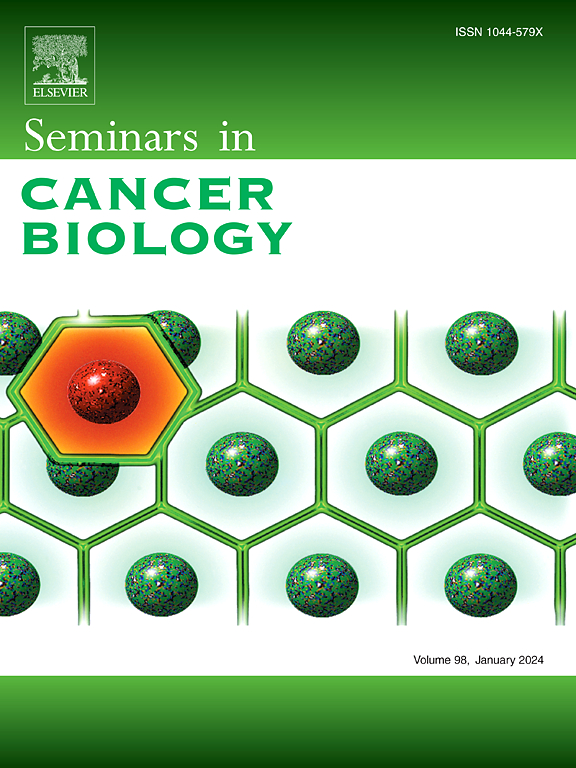DAMPs in immunosenescence and cancer
IF 12.1
1区 医学
Q1 ONCOLOGY
引用次数: 0
Abstract
Damage-associated molecular patterns (DAMPs) are endogenous molecules released by cells in response to injury or stress, recognized by host pattern recognition receptors that assess the immunological significance of cellular damage. The interaction between DAMPs and innate immune receptors triggers sterile inflammation, which serves a dual purpose: promoting tissue repair and contributing to pathological conditions, including age-related diseases. Chronic inflammation mediated by DAMPs accelerates immunosenescence and influences both tumor progression and anti-tumor immunity, underscoring the critical role of DAMPs in the nexus between aging and cancer. This review explores the characteristics of immunosenescence and its impact on age-related cancers, investigates the various types of DAMPs, their release mechanisms during cell death, and the immune activation pathways they initiate. Additionally, we examine the therapeutic potential of targeting DAMPs in age-related diseases. A detailed understanding of DAMP-induced signal transduction could provide critical insights into immune regulation and support the development of innovative therapeutic strategies.
免疫衰老和癌症中的 DAMPs。
损伤相关分子模式(DAMPs)是细胞在受到损伤或压力时释放的内源性分子,可被宿主模式识别受体识别,从而评估细胞损伤的免疫学意义。DAMP 与先天性免疫受体之间的相互作用会引发无菌炎症,这种炎症具有双重目的:促进组织修复和导致病理状况,包括与年龄有关的疾病。由 DAMPs 介导的慢性炎症会加速免疫衰老,并影响肿瘤的发展和抗肿瘤免疫,这突出了 DAMPs 在衰老与癌症之间的关系中的关键作用。本综述探讨了免疫衰老的特征及其对老年相关癌症的影响,研究了各种类型的 DAMPs、它们在细胞死亡过程中的释放机制以及它们启动的免疫激活途径。此外,我们还研究了针对老年相关疾病的 DAMPs 的治疗潜力。详细了解 DAMP 诱导的信号转导可为免疫调节提供重要的见解,并支持创新治疗策略的开发。
本文章由计算机程序翻译,如有差异,请以英文原文为准。
求助全文
约1分钟内获得全文
求助全文
来源期刊

Seminars in cancer biology
医学-肿瘤学
CiteScore
26.80
自引率
4.10%
发文量
347
审稿时长
15.1 weeks
期刊介绍:
Seminars in Cancer Biology (YSCBI) is a specialized review journal that focuses on the field of molecular oncology. Its primary objective is to keep scientists up-to-date with the latest developments in this field.
The journal adopts a thematic approach, dedicating each issue to an important topic of interest to cancer biologists. These topics cover a range of research areas, including the underlying genetic and molecular causes of cellular transformation and cancer, as well as the molecular basis of potential therapies.
To ensure the highest quality and expertise, every issue is supervised by a guest editor or editors who are internationally recognized experts in the respective field. Each issue features approximately eight to twelve authoritative invited reviews that cover various aspects of the chosen subject area.
The ultimate goal of each issue of YSCBI is to offer a cohesive, easily comprehensible, and engaging overview of the selected topic. The journal strives to provide scientists with a coordinated and lively examination of the latest developments in the field of molecular oncology.
 求助内容:
求助内容: 应助结果提醒方式:
应助结果提醒方式:


